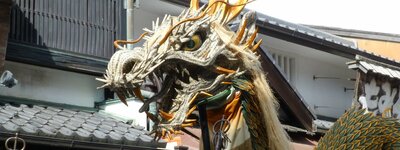A watercolour of the Blue Dragon of Kiyomizu-dera during the procession.
Kiyomizu-dera
Kiyomizu-dera (清水寺) is a famous temple in eastern Kyoto. It sits on a steep hill and its main hall is built on a high wooden platform that offers great views over the city.
There is an expression kiyomizu no butai kara tobioriru (清水の舞台から飛び降りる) which translates a “to jump off the stage of the Kiyomizu temple” and means “to make a leap into the dark, to jump in at the deep end”. In the olden days, (presumably rather desperate) people would jump off the platform of the Kannon hall of the temple in the belief that, if they got off scot-free, their wishes would be granted, and if they died they would enter Nirvana. The drop is thirteen metres.
Records from the Edo era show that 234 people jumped off the platform; 34 of them died. In 1872, the Kyoto city council issued an order forbidding this practice.
The Kannon with the Thousand Arms and Thousand Eyes
Kiyomizu-dera is a Buddhist temple and is dedicated to Kannon (観音, kan-on), the bodhisattva of infinite compassion. I wrote a previous post about this deity, “The mystery of the giant Kannon statues”.
The manifestation of Kannon worshipped in Kiyomizu-dera is the Thousand-armed Kannon (senju kannon, 千手観音), one of the most popular manifestations: the thousand arms symbolizes Kannon’s ability to embrace and alleviate the suffering of the world. In full it is the “Kannon with a Thousand Arms and a Thousand Eyes”, every hand holds an eye. People prayed to the Senju Kannon to avoid illness, eye problems, and blindness.
The Blue Dragon
In traditional Chinese astronomy, there are four mythological creatures that guard the four cardinal directions. They are the Blue Dragon of the East, the Vermilion Bird of the South, the White Tiger of the West, and the Black Tortoise of the North. In Japan these creatures are considered the guardian spirits of cities. So the Blue Dragon (seiryū, 青龍) protects the city of Kyoto on the east and Kiyomizu-dera is dedicated to it.
The Kiyomizu-dera temple legend says that the Kannon is incarnated as the Blue Dragon. The temple is built on the site of the Otowa waterfall (音羽の瀧) and according to the legend, every night the dragon comes flying to drink from the water.
The drawing
In March and September there is a procession called the seiryū-e (青龍会), in which a large (18 m long) dragon is paraded through the streets by a host of costumed actors.
Some years ago, I was staying in Kyoto for a while. I was lucky enough to just happen to pass by when the procession was being held. I made a drawing based on a picture I took.
The drawing is mostly a faithful rendition of the photograph, except for the sky and some of the colours (there is more blue in my drawing). Also, if you look closely, you see that the papier-maché head of the dragon is covered in Japanese characters. Because of the shape of the head and also the resolution of the picture, these were quite hard to read, but I could work out that they were taken from Buddhist sutras. So I searched for the text of a sutra and used that for the parts where I could not read the actual characters.
Although the dragon is called “blue”, and sometimes “azure” or “cerulean”, the scales of the dragon in the procession are a dark blue-green tint. In Japanese, the word aoi (青い) means both blue and green, for example a traffic light is aoshingō (青信号). In my drawing I tried to match the original colour of the scales.
I have explained my drawing process and the materials I use in a previous post, “Summer night in Shinbashi dōri”. This drawing is on a sheet of 56 cm × 38 cm, also known as “half imperial”, of Arches 300 g/m² “not”, i.e. cold pressed with a rough finish.
Here are a few intermediate stages:
The line drawing:
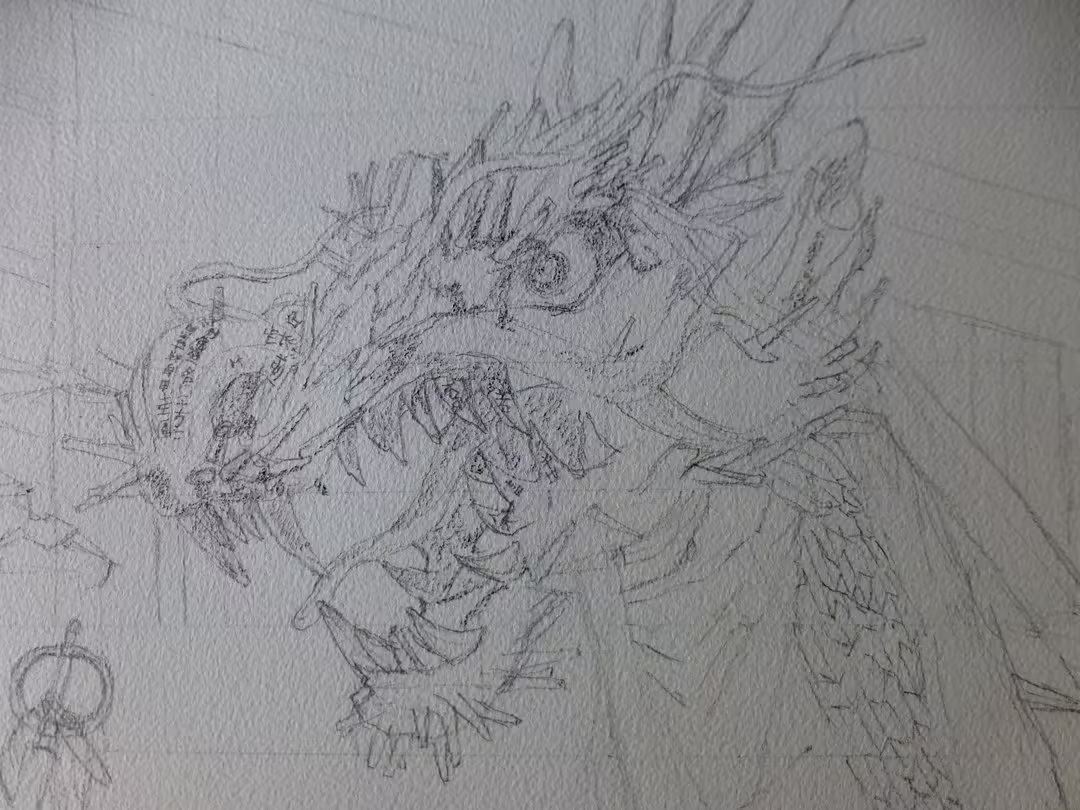
Some colour applied:
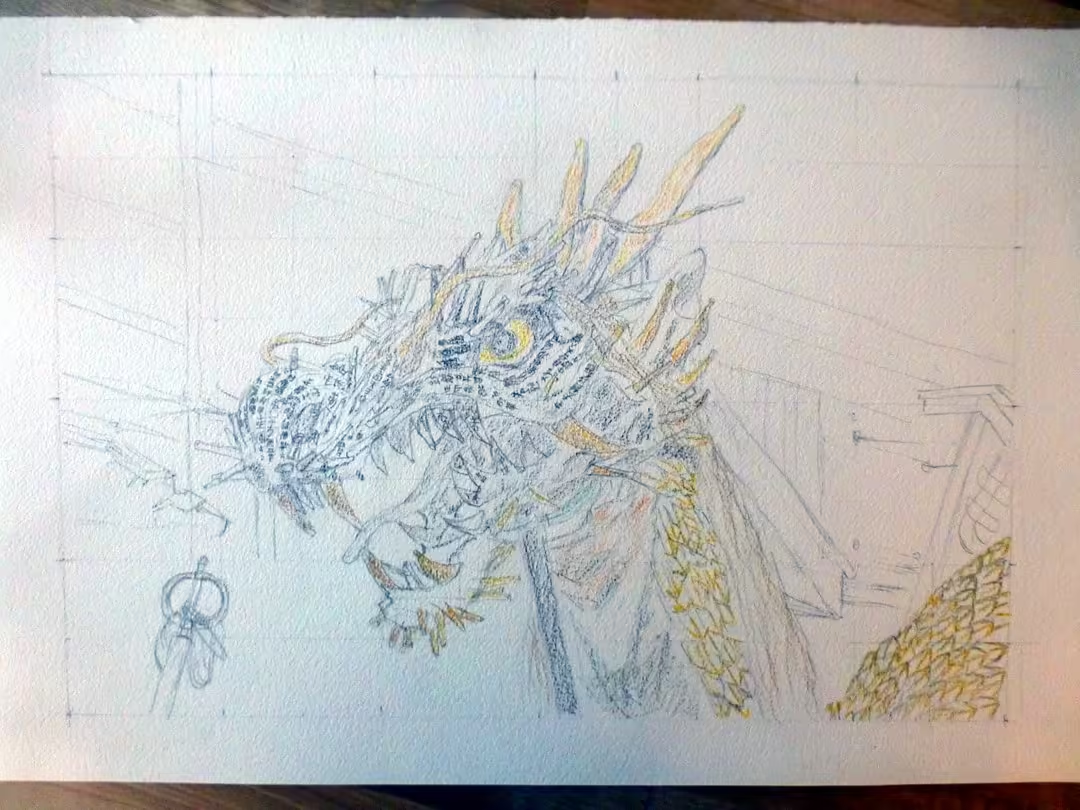
Some washing done:
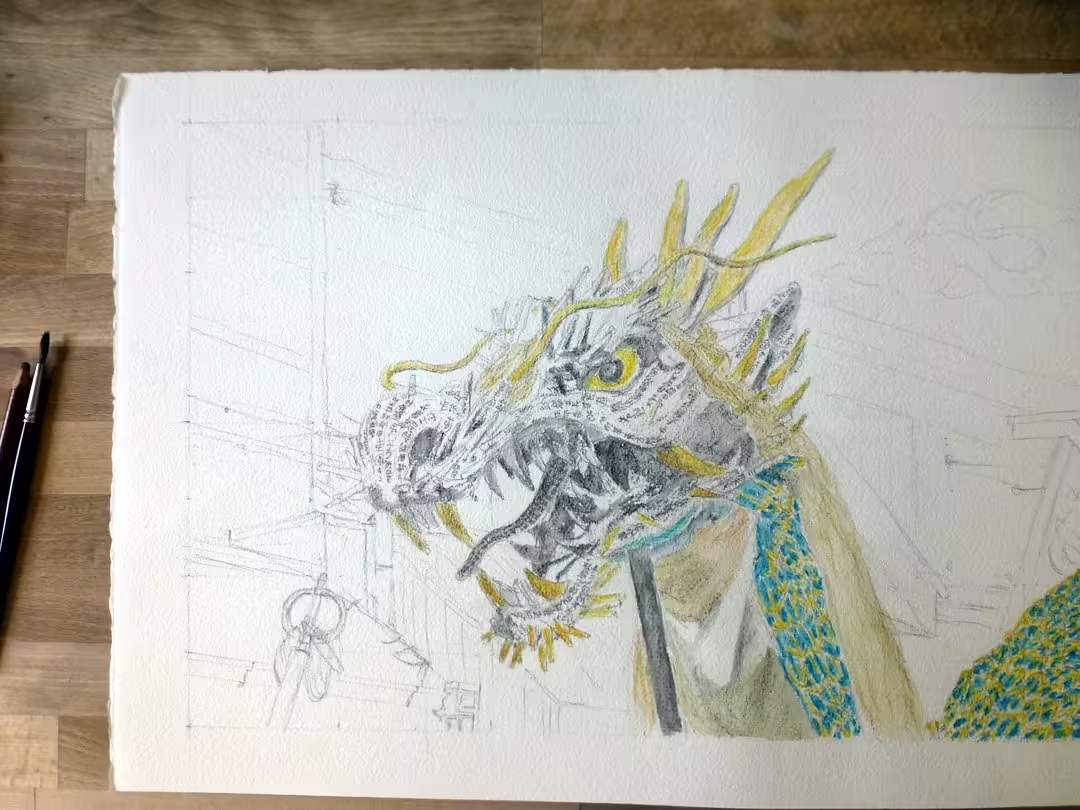
And this is the final result:
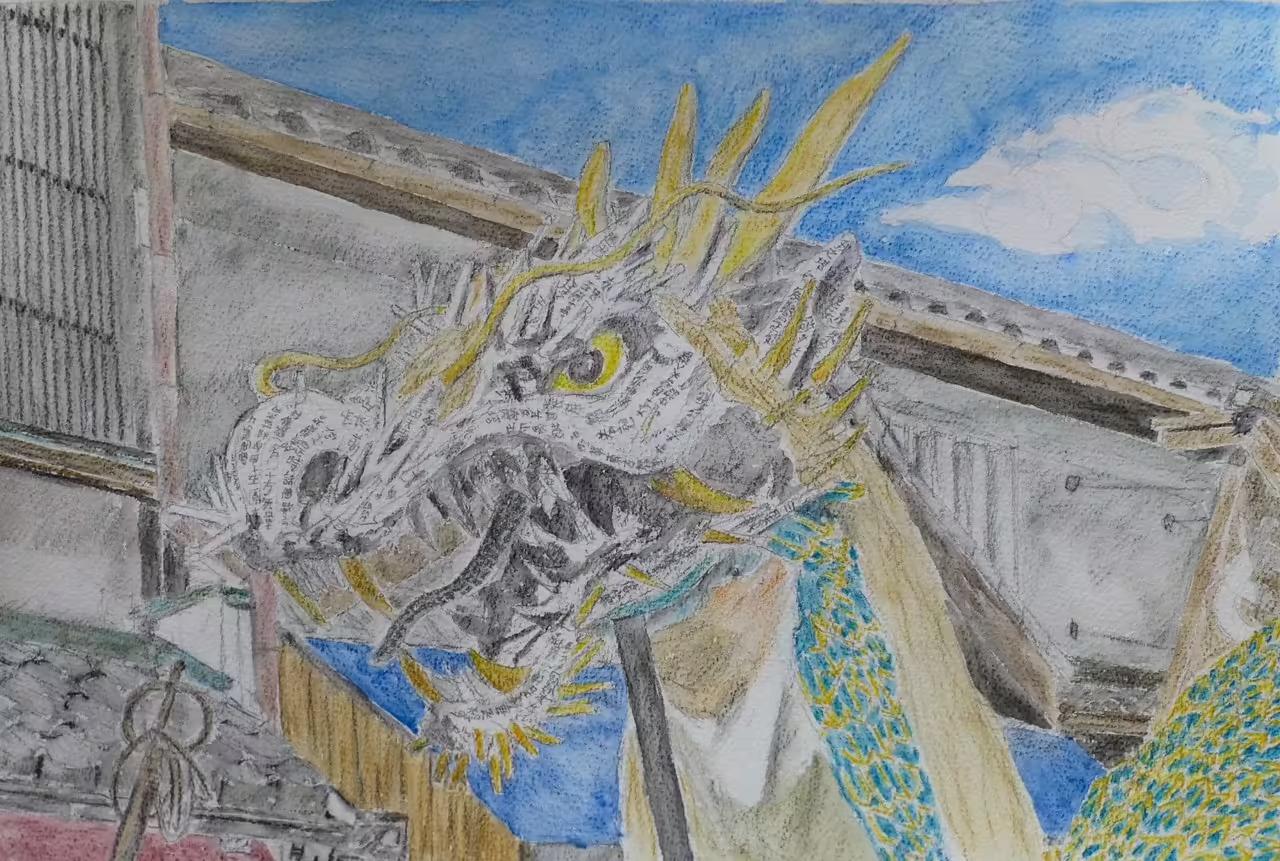
The banner picture shows part of the picture of the dragon on which drawing is based.
